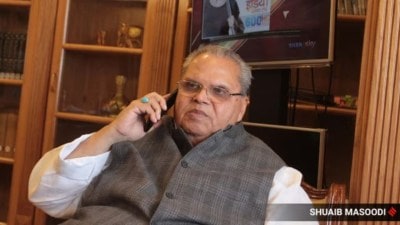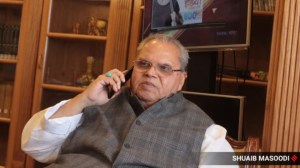Transporting goods to halting revolutionaries, the story behind India’s first electric loco shed
India has at least 30 electric loco sheds, as on November 1, and many more are likely to come up with the Railway Ministry planning to complete electrification of the railway network across the country by 2020.
 The electric loco shed at Kalyan; India has at least 30 electric loco sheds, as on November 1, and many more are likely to come up by 2020. (Express Photo)
The electric loco shed at Kalyan; India has at least 30 electric loco sheds, as on November 1, and many more are likely to come up by 2020. (Express Photo)
THE electric loco shed at Kalyan, the first of the Indian Railways and the second in Asia after Japan, inaugurated on November 28, 1928, completed 89 years on Tuesday. The story of this loco shed commissioned by the British is also the story of military strategy and economic gains that changed the pace at which railway commuters across the country travelled.
India has at least 30 electric loco sheds, as on November 1, and many more are likely to come up with the Railway Ministry planning to complete electrification of the railway network across the country by 2020.
A senior railway official said electrification in India began with the inauguration of the first electric train between Victoria Terminus (present day CSMT) and Kurla on the harbour line on February 3, 1925 on the then Great Indian Peninsula Railway.
This helped rail connectivity at the city level, but not across the country. Kaushik Dharwadkar, an electrical engineer and railway enthusiast, says, “At this point of time, there were revolutionary activities in Pune for India’s independence. The British wanted a rail network to help their troops reach Pune from Mumbai in a short time in case there were any major law and order problems there. This was an important reason for them to commission the electric loco shed so that the British troops could reach Pune at a quicker pace.”
Dharwadkar adds, “Another reason for the electric loco shed to be commissioned by the British was monetary. Because of the Kasara and Karjat ghats that had to be crossed by the trains, it was becoming difficult to transport goods with the help of steam engines. With Mumbai being a port city and the financial capital, they needed a faster means of communication. With the electric loco shed coming up in Kalyan, they could also transport articles to various parts of the country at a quicker pace.”
A railway official said that soon after the inauguration of the electric loco shed, the first electric engine that was brought to the shed was named Sir Leslie Welson, who was the then Governor of Bombay. “The engine is currently at the railway museum in New Delhi,” the railway official said.
Dharwadkar said that while initially there were 63 locomotives that could be housed at the yard, currently the Kalyan electric loco shed houses 201 electric engines of various makes.
An official said all electric engines have a ‘home shed’ where they return after they are in service for a few years and traverse more than a designated number of kilometres. “The engine is then brought to the yard where it is dismantled and every little part is checked to see if it is functioning well. Any wear and tear is taken care of and the trains then return to their designated routes,” a railway official said.
Railway Chief Public Relations Officer Sunil Udasi said, “The Kalyan electric loco shed was the first such electric shed in the country and played an important role as far as electrification of the railway network in India is concerned.”












